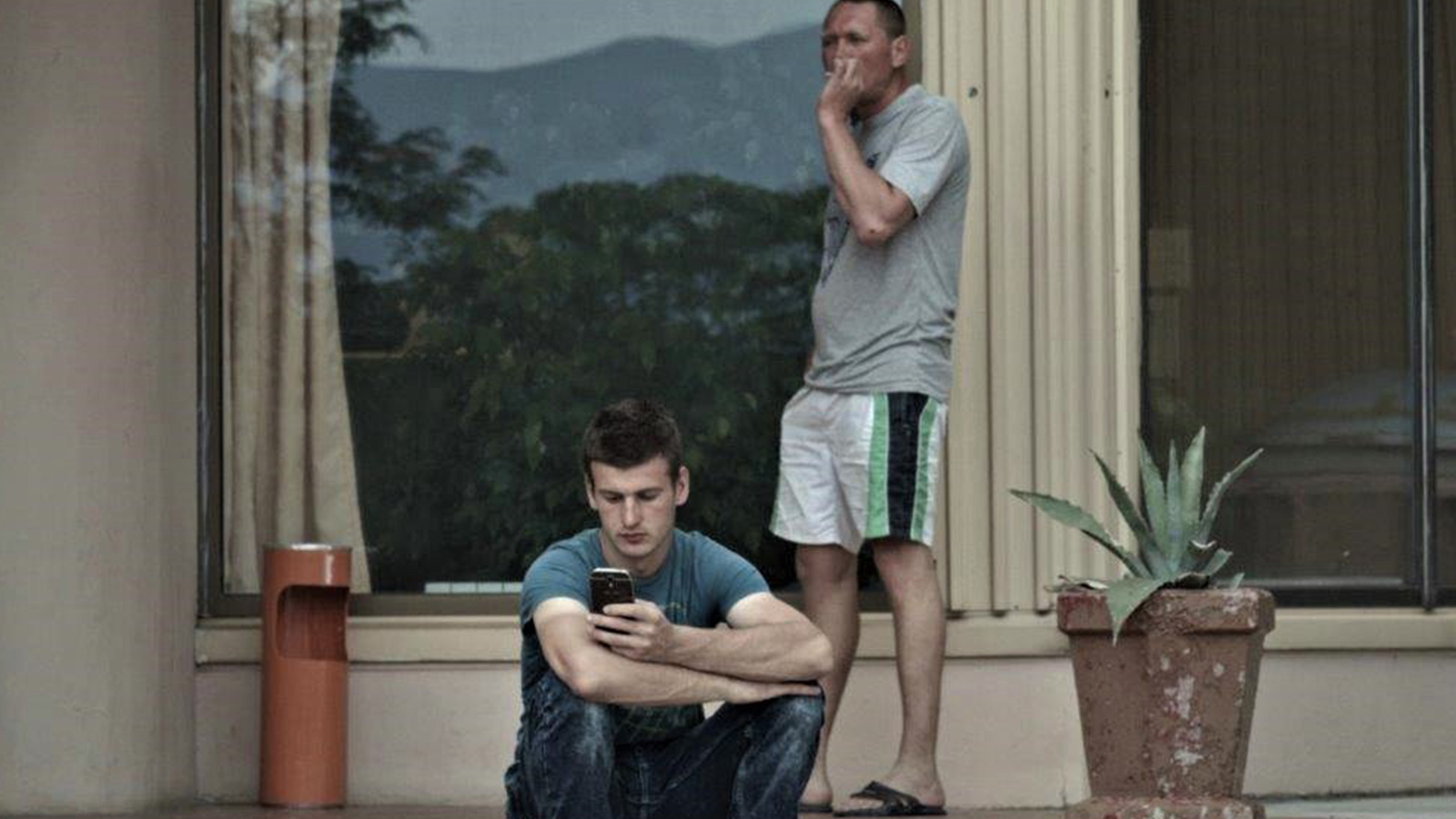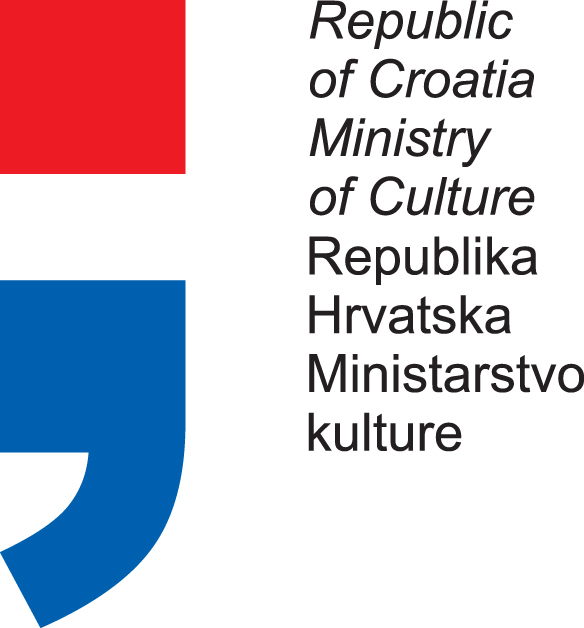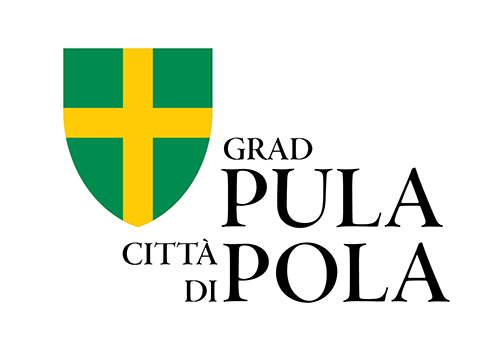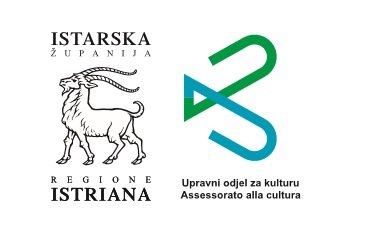
Cinemaniac > Think Film 2020: Vacant Hours
Mate Ugrin in dialogue with Katerina Duda and Igor Grubić
30 August – 5 September 2020
ECPD – European Centre for Peace and Development
Kapitolinski trg (behind the Temple of Augustus)
Opening: Sunday, 30 August, 8 p.m.
Curators: Branka Benčić, in cooperation with Marta Baradić and Sara Jakupec
The central place around which the 19th edition of the exhibition Cinemaniac > Think Film: Vacant Hours revolves around is the short film by the same name by Mate Ugrin. It is conceived as a central film/video installation around which, like a footnote that expands and reproduces the existing text, the dialogue of artistic positions is structured. In this constellation of voices, we will watch films by Igor Grubić How Steel Was Tempered, presented at the Croatian Pavilion at last year’s Venice Biennale, and the noted film Currents by Katarina Duda. By creating a relationship between three artistic positions, Vacant Hours seems to be the common denominator bringing together three recent film/video works of experimental-documentary character, which, by framing space and time, place and identity, reflect the interrelationships and tensions of different spatial and temporal dynamics between man and nature. Today we can talk about the ‘documentarist-style turn’ in contemporary artistic practices as a way for the artists to establish a specific relationship with the real redefining of the visual language, esthetic, and experiment through portraits of social reality and personal, individual stories.
Each of the films talks about the forms of social notions of work in their own way, presenting the images and stories of current or past employees or places of work, the issues of collective memory and social and political reality, exploring and reflecting the different positions and ways in which atmosphere, meaning and experience of space is structured. The abandoned spaces of the past, the vacant potential of the future, and the void of dystopian non-places are the spaces of articulation of artistic imagination as the (im)possible perspective which opposes collapse. By noting the existing traces and retaining the traces of past tales and history, which are once again registered and dissolved in the new context, and refracted in a range of moments, collective and individual, visible and invisible histories written on the margins of the spaces of material and social exchange. -From the foreword by Branka Benčić.
MATE UGRIN
Vacant Hours
The short film Vacant Hours is a documentarist-style meditation on the passing of time, isolation, the city. The protagonists are migrant shipyard workers at 3. maj in Rijeka, who we see in their free time they mostly spend within their dormitory. The silent and contemplative scenes build up a specific atmosphere that is expressed in light and colours, underlining the feeling of loneliness and emptiness. Video technology supports the prolonged temporal dimension of the image to fictionalise time, while at the same time, the lengthened temporal dimension accentuates the tension and the potentiality of the scene. What we do see is time after work, or the daily routine of the workers, which emerges in the background, and is focused on the end of the working day. The highlighted temporality of the image and the passing of time are treated as central events. Vacant Hours are seen as a dedication to work, postponed work, uncertain work, work on hold, time after work. Like a video installation, Vacant Hours capture the entire gallery space, focusing out attention to the complex relationships of the contemporary subject in the mediatised space and time. In the immediate vicinity of Uljanik shipyard, in the vast empty space, where there used to be ships blocking our view, we see VacantHours by Mate Ugrin in a completely new way, recording into the view the specific nature of the context and place of its screening. (B.B.)
KATERINA DUDA
Currents
The plants are the only ones left in a vacant business building. In this large, once lavish space, the gardener still takes care of the plants that have become part of its architecture, and prepares the ones in pots for relocation. The plants which used to reign over this imposing interior in the eighties now construct a new temporality in this building void of people. Apart from the gardener, a single fireman watches over the empty building, doing rounds and maintenance for no one.
Plants such as Dracaena, Ficus, and Philodendron were integral parts of the socialist modernist architecture in the seventies and eighties. Today, they remain strong visual reminders of the socialist state. In Currents, the movement of plants, the only remaining residents of the building, may be read as a part of a wider context, the change of currents. A paradigm of understanding space is replaced with another, the concept of the welfare state, and its undertakings, is treated with gradually disappears.
IGOR GRUBIĆ
How Steel Was Tempered
The experimental-animated film How Steel Was Tempered by Igor Grubić (2018), like a double exposure photo, in which the past and the present meet, presents a backward glance, to the empty and abandoned factory plants. The central narrative is based on a father-son relationship. The father takes his son to an abandoned plant where he used to work. Even though the plant has long been a derelict image of the new system, the space will come to life for a bit in an image of workers’ solidarity and encourage an act of defiance. This symbolic act turns into a moment of catharsis, which reestablishes the relationship between father and son. By evoking a heroic times of not only industry but of filmmaking, the animated film How Steel Was Tempered introduces human and animal characters into empty and crumbling spaces and accompanies them with historical documentary footage. It is a dark and mournful meditation, a condensed version of the doom of personal stories and individual destinies in the decay of communities and collectivity, notes Jasna Jakšić. Like an image of vanishing, the ruins of the architecture or moment of the film burning, Grubić’s animated film, realised as a layered visual orchestration that combines different media and techniques - drawing, photography, and archive found footage material, represents the debris of the space and events that fade and disappear before our eyes. (B.B.)
BIOGRAPHIES
Mate Ugrin was born in 1986 in Pula. He graduated in filmmaking from the Academy of Arts in Belgrade in 2012. He holds an MA in film from the University of Fine Arts (HFBK) in Hamburg and an MA in art and media from the Berlin University of the Arts (UdK). He has directed several short films.
Katerina Duda (1989) is a multimedia artist. She graduated in animation and new media from the Academy of Fine Arts, and in sociology from the Faculty of Humanities and Social Sciences in Zagreb. Her work combines social practice art, actions and interventions in the public space, as well as documentary film and video. She has exhibited at individual and group exhibitions in Croatia and abroad. She has made two documentary film: Cutting (Restart’s School of Documentary Film) and Currents (Restart). She lives and works in Zagreb.
Igor Grubić has been working as a multimedia artist since the early 1990s. His work includes site-specific interventions in public spaces, photography, and film. In 2000, he started working as a producer and author of documentaries, TV reports, and socially engaged advertisements. His work has been exhibited internationally at numerous institutions and at various events and film festivals, and can be found in the collections of Croatian and international museums (Manifesta, MoMA PS1 New York, TATE Modern, Museum of Contemporary Art Zagreb, Museum of Contemporary Art Beograd, Belvedere 21 Vienna). He has received several awards for his work. His exhibition Traces of Disappearing presented the Republic of Croatia at the Venice Bienale in 2019.
CINEMANIAC > THINK FILM is a multi-annual research platform examining the connections between film, moving images, and contemporary art, which has been a side programme of Pula Film Festival since 2002.
The project is formed in the interdisciplinary space of the intersecting of contemporary practices of audiovisual culture and art, and is dedicated to a systematic reflection about the tools and the media opinion on contemporary artistic and curatorial practices in the work with moving pictures, projector images, their interrelationships and the ways of expression, contextualisation, presentation and perception, creating an active interaction of the social and cultural field. Focused on the relationships between images and the world, moving pictures of the artists establish a relationship toward current film and artistic currents, new visual languages, and contemporary art, which enables a perspective on the current aesthetic and social phenomena.
Cinemaniac > Think Film: Perturbations is realised in cooperation with Cinemaniac Think Film / Artists’ Cinema (Branka Benčić), Film protu Film / Series for Invisible Cinema (Tanja Vrvilo), Kino Katarina (Marta Baradić), Kreativni sindikat / Video forum (Igor Grubić, Sara Jakupec).
The exhibition is funded by the City of Pula, Ministry of Culture, Croatian Audiovisual Centre, and the Istria County.




